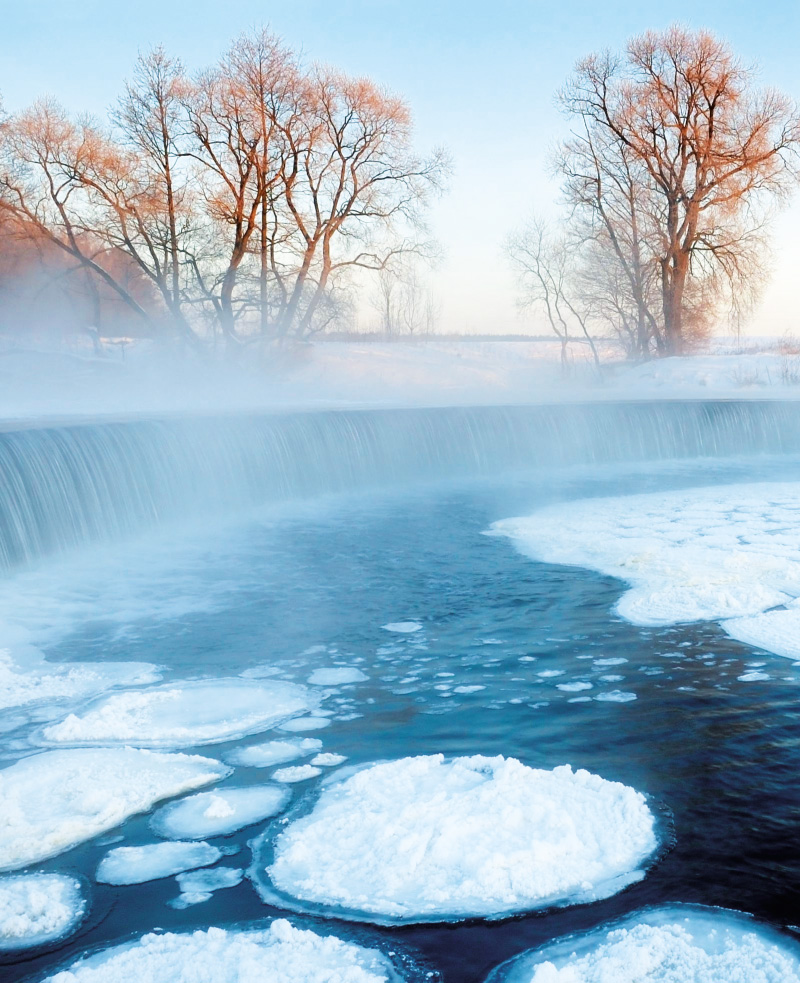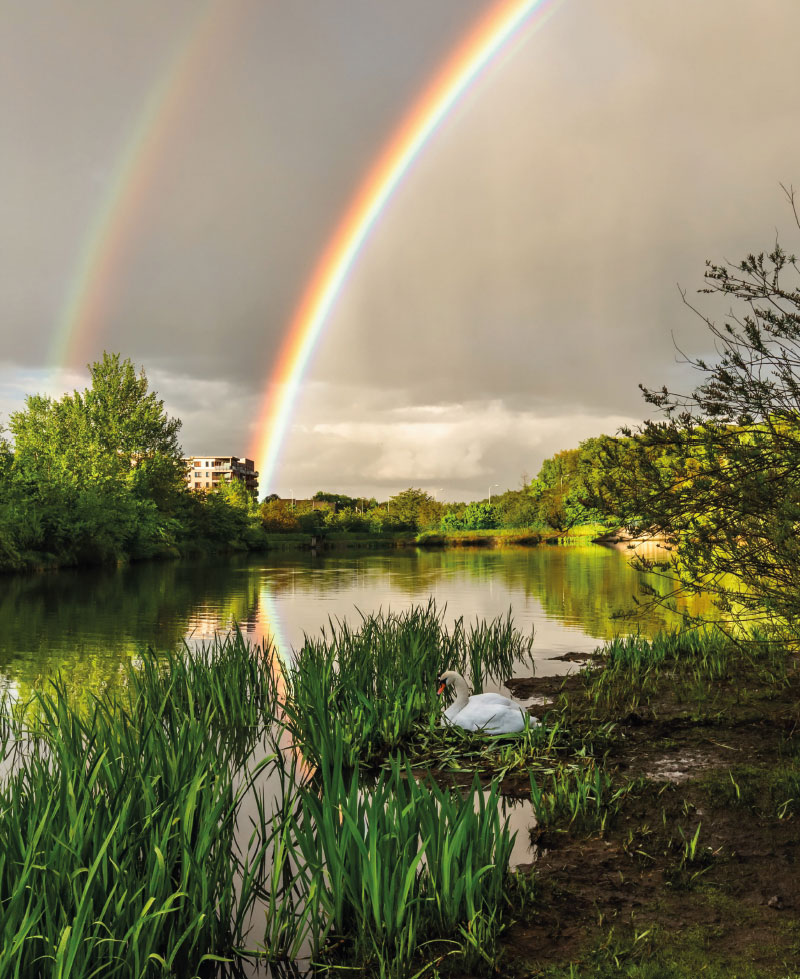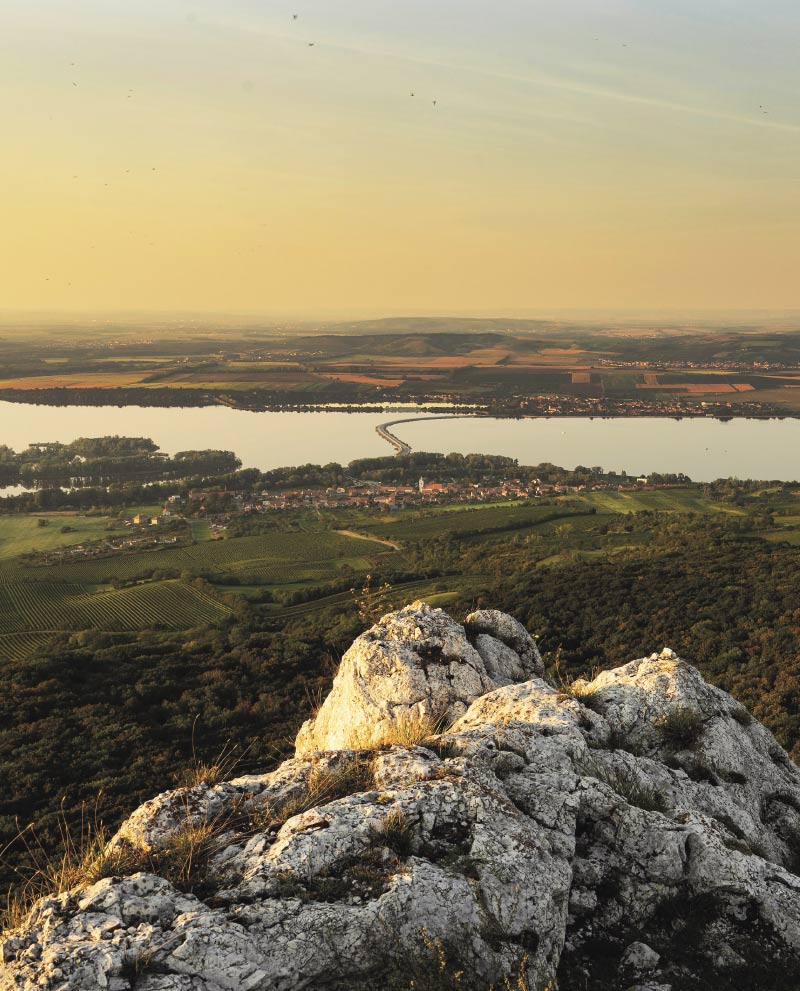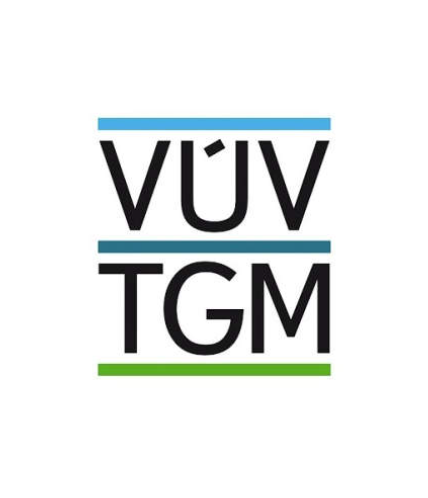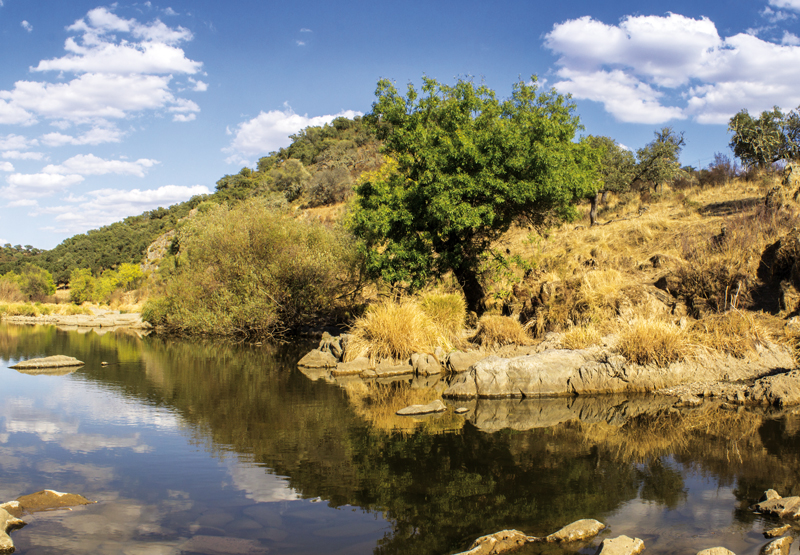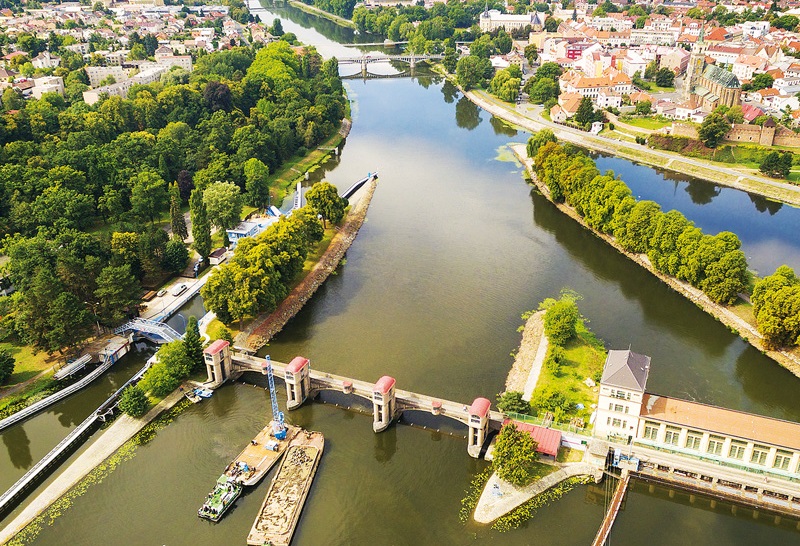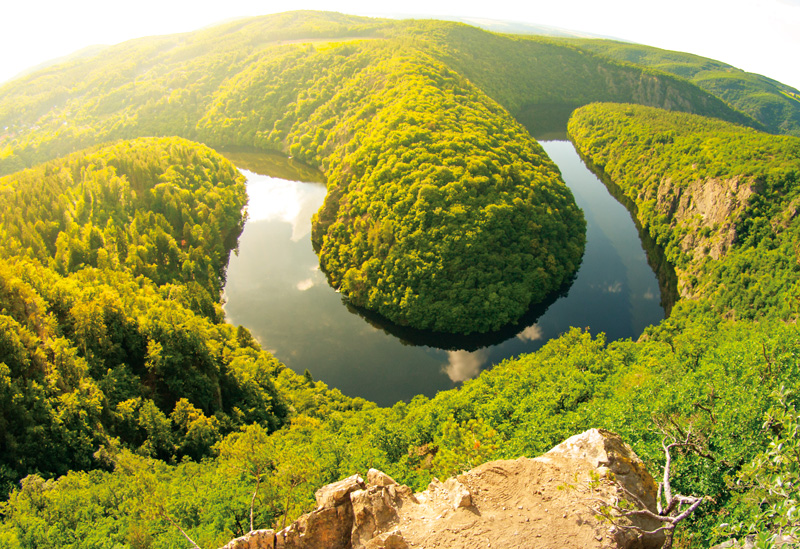HYMOD-KZ database and deficit areas
This article describes the HYMOD-KZ database, available at https://shiny.vuv.cz/HYMOD-KZ/. The database provides detailed results of hydrological modelling and hydrological balance analysis of catchments (water bodies) for current and future climate conditions; it also includes updated deficit areas, the description of which is part of this article. This tool can serve as a foundation for water management ex-perts, academia, and the broader professional community as it provides outputs at the spatial resolution of water bodies. The graphical rep-resentation of results facilitates understanding of complex hydrological phenomena and supports decision-making in water management planning.
Tools for risk assessment of catchment areas for abstraction points of water intended for human consumption
In December 2020, the new EU Directive 2020/2184 on the quality of water intended for human consumption was published. This Directive places a strong emphasis on comprehensive protection of water resources and introduces an obligation to carry out risk assessment and risk management of the catchment areas for abstraction points of water intended for human consumption, compared to the previous Directive from 1998. The risk analysis of the catchment areas must be carried out for all water abstractions for drinking purposes that abstract more than 10 m3 raw water per day. In the Czech Republic, this concerns approximately 3,650 abstractions (of which about 3,500 are groundwater abstractions and about 150 surface water abstractions). On a nationwide scale, it is therefore a considerable amount of risk analyses of parts of the catchment areas, which, according to the Directive, must be performed by 2027. The main aim of the project “Tools for risk assess-ment of catchment areas for abstraction points of water intended for human consumption” (supported by the Technology Agency of the Czech Republic) is to develop a methodology for the preparation of this risk analysis of the catchment areas. In order to ensure that the risk analyses of the catchment areas to be prepared by different entities have a uniform form and structure, a form (mock-up) of what the risk analyses of the catchment areas should look like and what they should contain has been developed within the framework of the methodology. As this is a very complex issue, only the main skeleton of the methodology will be presented in this article, focusing on the basic characteristics of the abstraction and the definition of the area (the catchment areas) in which the risk activities for the quality of the abstracted raw water are determined.
Future water demand scenarios to 2050: sectoral analyses and forecasts
This article presents the results of the sub-objective “Scenarios of future water demands for different climate scenarios and individual sec-tors of water use” (DC 1.1). Which is part of TA CR project No. SS02030027 “Water systems and water management in the Czech Republic and climate change conditions (Water Centre)” and is a sub-part of the WP 1 “Prediction of the development of water resources security in the Czech Republic until 2050 in regions depending on climate change”.
Assessment of the status of surface water bodies in the Czech Republic for 2019–2021
The article presents the results of the assessment of the status of surface water bodies in the Czech Republic for 2019 to 2021. The status assessment has been carried out by T. G. Masaryk Water Research Institute, p. r. i. (TGM WRI), Biology Centre CAS, and the Czech Hydrometeorological Institute (CHMI). The status of the water bodies was evaluated according to monitoring data from the River Boards state enterprises and – in the case of selected priority substances in biota – from the CHMI. The assessment procedures were the same as in the previous status assessment for 2016 to 2018, which was incorporated into the river basin management plans for the third planning period. The article focuses on presenting the results of the assessment, which was prepared by the TGM WRI. It is a summary assessment of the ecological and chemical status of water bodies, an evaluation of chemical and physico-chemical indicators and a comparison of the results of the assessment for 2019 to 2021 with the assessment for 2016 to 2018. In 2019 to 2021, good chemical status was not achieved in 57.6 % of water bodies; the problematic pollutants are mainly polyaromatic hydrocarbons; in the ‘biota’ matrix there was also mercury and brominated diphenyl ether. Good ecological status/potential has not been achieved in 92.3 % of water bodies; the problematic indicators are mainly biological quality elements and phosphorus.
Assessment of trends in concentrations of chemical and physico-chemical indicators of the status of surface water bodies
This article presents the results of trend assessment of selected chemical and physicochemical indicators of surface water status. The assessment approach is based on a similar procedure for assessing significant upward trends of pollutants and trend reversals in groundwater bodies. The procedure is based on measured concentrations from 2010 to 2018 and estimates concentrations at the end of 2021, 2024, and 2027. For the trend assessment, data from Czech river basin state enterprises were used to assess the ecological status/potential and the chemical status of surface water bodies. However, only part of the profiles with measured concentrations met the time series requirements. The assessment of trends towards the end of 2024 and 2027 shows that some indicators (polyaromatic hydrocarbons, adsorbable organically bound halogens – AOX, and nitrate nitrogen) are projected to improve compared to the status as of 2018. On the other hand, a slight deterioration is predicted for biochemical oxygen demand, dissolved nickel, and ammonia nitrogen.
Optimization network model of water management systems
The paper describes software aimed at analysing water management infrastructure and identifying critical points for water supply and assessing possible measures aimed at optimising the water supply function of the water management system. The computational procedures integrate the evaluation of the hydrological characteristics of the area, the parameters of the water management and water supply systems and the water supply requirements. The solution uses graph theory and network flow optimization (out-of-kilter algorithm is applied). The program is implemented as a PC application and equipped with a user interface.
Potential of areas protected for surface water storage to mitigate the impacts of climate change on drinking water supply
In the Czech Republic, areas morphologically, geologically and hydrologically suitable for surface water storage to mitigate the adverse effects of floods and droughts are defined through the General Plan for Surface Water Accu-mulation Areas. In the context of climate change, these locations create potential for possible adaptation measures. This article describes the assessment of the potential of selected sites for water supply under climate change condi-tions by means of hydrological and water balance modelling.
Balance of groundwater resources and demands for human consumption during climate change conditions
This article presents the results of the assessment of the possible impact of climate change on groundwater abstraction for human consumption between 2041 and 2060.
Invitation to the travelling exhibition Historical water management objects, their value, function and significance for the present time
Research focused on the evaluation of historical water management objects in the Czech Republic from the point of view of their significance for historic preservation is already in its fifth year. It is broadly conceived interdisciplinary research with the involvement of experts from TGM WRI, Methodological Centre of Industrial Heritage of the National Heritage Institute, Historical Institute of the Academy of Sciences of the Czech Republic, The Silva Tarouca Research Institute for Landscape and Ornamental Gardening, and Faculty of Science, Palacký University Olomouc. The research is carried out within the DG18P02OVV019 project “Historical water management objects, their value, function and significance for the present time” financed by the NAKI II programme of the Ministry of Culture.
Risk assessment as a comprehensive approach to protection of drinking water sources
Drinking water supply as well as its quality form one of the basic pillars of modern society. This corresponds to the goal of the International Water Association (IWA) – good, safe and drinkable water, which enjoys consumer confidence and can be not only drunk without fear, but in which the consumer also appreciates its taste and aesthetic appearance. In order to meet these objectives, it is important to set drinking water quality requirements and also to keep the whole process of drinking water production and distribution, including all risk areas, under continuous control.
TGM WRI HEIS: 25 years of development and operation of the information system
V letošním roce je tomu rovných 25 let od zahájení vývoje (a následně pak provozu) Hydroekologického informačního systému VÚV TGM (HEIS VÚV). Tato doba je z hlediska kontinuálního vývoje a provozu informačního systému v současném prostředí takřka neustálých technologických a organizačních změn téměř úctyhodná a zcela jistě si zaslouží jak alespoň malé ohlédnutí za uplynulým obdobím, tak také stručnou rekapitulaci zaměřenou na současnost informačního systému (čtenář může namítnout, že zde by se nabízelo zmínit se podrobněji i o výhledu a plánech do budoucnosti, v této oblasti si však spekulovat příliš netroufáme, a proto ji zmíníme pouze stručně v závěru textu).
Preservation of drinking water demand from water reservoirs in climate change conditions
This study presents interim results of an evaluation of a potential climate change impact on the preservation of drinking water demand provided by water reservoirs in the timeframe of the year 2050. Hydrological and water sources and demands balance procedures have been applied, including modelling of the storage ability of water resources and water supply systems.
Surface Water Status Assessment for the Third Cycle River Basin Management Plan of the Czech Republic
The aim of this article is to acquaint the professional public with the summary results of the assessment of chemical status and ecological status/potential of surface water bodies “river” and “lake” categories in the Czech Republic for 2016–2018. This assessment is one from the basis for preparation of the Third River Basin Management Plan (2021–2027) at all its levels: sub-basin plans, national plans, and international plans of the Elbe, Danube, and Oder river basin districts.
The assessment of the status of surface water bodies in the Czech Republic for the period 2013–2015
This article aims to present to the general public the results of the assessment of the ecological status/potential and chemical status of surface water bodies categories “river“ and “lake“ for the period 2013 to 2015 in the Czech Republic. The assessment was carried out in 2017 by the Water Research Institute of T. G. Masaryk, p. r. i.
Impact of drought and water scarcity on water use assessment
Exist tools for water balance, time series of water abstractions and their season variability, difference between permitted and real abstractions and impact of drought in 2015 were analysed and assessed in subtask Impact of Drought on Water Use Assessment.
Selected results of reported River Basin Management Plans in the Czech Republic
River Basin Management Plans data processing enables obtain not only detailed summary of results, but also appreciates relations between partial results and their significance to achievement of specified objectives.
Surface water body typology category river in the 1st and 2nd cycle of River Basin Management Plans and its consequence to ecological status assessment
Surface water body delineation and setting a typology are one of the initial steps during Water Framework Directive implementation (WFD) [1]. The first delineation and typology was prepared in 2004–2005 for the first plans, but all the results were significantly changed in the second cycle 2009–2010.
Reporting of River Basin Management Plans under Water Framework Directive in 2016 in the Czech Republic
In 2015 the River Basin Management Plans (RBMP’s) for the 2nd planning cycle under Water Framework Directive were designed and approved. According to the Directive the copies of the RBMP’s were sent to the Commission by 22. 3. 2016.


